Don't wanna be here? Send us removal request.
Text
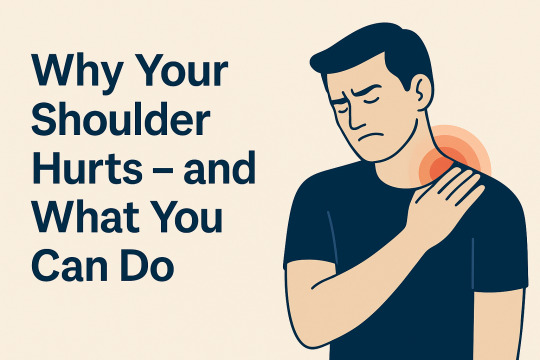
Common Causes and How to Get Relief Shoulder pain can sneak up on you — whether you slept wrong, lifted something heavy, or just reached for something on a shelf. Sometimes it’s sharp and sudden, other times it’s dull and nagging. Either way, it can seriously limit your ability to work, drive, or even get dressed. At Unity Pain Management, we help patients identify the true cause of shoulder pain and create a plan for real relief. Common Causes of Shoulder Pain The shoulder is one of the most flexible joints in your body — but that flexibility also makes it more prone to injury and wear. Here are some of the most common reasons your shoulder might be hurting: 1. Rotator Cuff Strain or Tear The rotator cuff is a group of muscles and tendons that keep your shoulder joint stable. Overuse, aging, or sudden trauma can lead to: - Dull aching deep in the shoulder - Pain that worsens with overhead movement - Difficulty sleeping on the affected side 2. Bursitis Bursae are small, fluid-filled sacs that cushion your joints. When they become inflamed, it causes bursitis, which leads to: - Pain when lifting the arm - Swelling or tenderness - Increased pain at night 3. Frozen Shoulder (Adhesive Capsulitis) This condition causes stiffness and limited range of motion in the shoulder, often after an injury or long period of immobility. - Gradual onset - Limited ability to raise or rotate your arm - Pain worsens over time, then may improve slowly over months 4. Shoulder Impingement Syndrome When tendons in your shoulder get pinched during movement, it causes: - Pain when reaching overhead - Weakness in the arm - “Catching” sensation 5. Arthritis Shoulder arthritis develops slowly and is more common with age or injury history. - Deep joint ache - Pain during movement and rest - Grinding or clicking sounds 6. Referred Pain Sometimes shoulder pain isn’t coming from the shoulder at all — it could be referred from the neck, spine, or even the heart. This is why a thorough evaluation is so important. When Should You See a Doctor? Contact a specialist if: - The pain lasts more than a few days - You can’t lift your arm or reach overhead - You feel weakness, numbness, or tingling - It interferes with sleep or daily tasks - You’ve had a recent fall, injury, or accident If shoulder pain comes on suddenly and with chest pain or shortness of breath, call 911 immediately — it could be heart-related. How Unity Pain Management Can Help We’ll begin with a full shoulder and neck evaluation to determine the exact cause of your pain. Then we’ll create a custom plan that may include: ✅ Joint or trigger point injections✅ Medication management✅ Referral for imaging (MRI or ultrasound)✅ Referrals for physical therapy✅ Education on posture and safe movement Our goal is to reduce inflammation, restore movement, and keep you doing what you love — pain-free. Let’s Get to the Bottom of Your Shoulder Pain Don’t let shoulder pain limit your daily life. Relief is possible — and it starts with the right diagnosis. 📞 Call Unity Pain Management at (350) 216-5774💻 Or schedule a visit at UnityPain.com Your shoulder works hard — let’s help it feel better. Read the full article
0 notes
Text
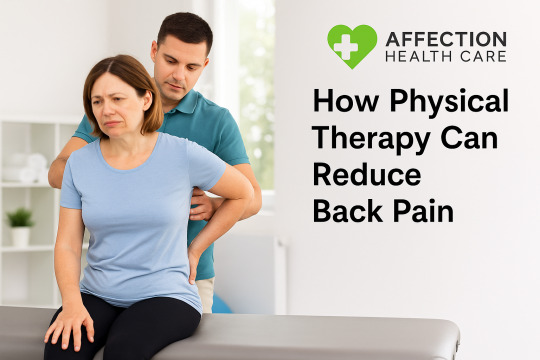
Back pain is one of the most common reasons people miss work, limit daily activity, or seek medical care. Whether it’s from an accident, poor posture, or chronic conditions, physical therapy (PT) is one of the most effective non-surgical treatments available. At Affection Health Care, we often refer patients to trusted physical therapy partners to help restore movement, reduce pain, and improve long-term function. Here’s how physical therapy works—and why it might be the solution your back has been waiting for. 🧠 Why Back Pain Happens Back pain can result from: - Muscle strain or spasms - Herniated or bulging discs - Poor posture or sitting too long - Spinal misalignment - Injury from accidents or lifting - Degenerative changes (arthritis, sciatica, etc.) The pain may come on suddenly or build over time, and can affect the upper, middle, or lower back. 🏃♀️ How Physical Therapy Helps Physical therapists are movement specialists who assess the way your body moves and builds a plan to restore balance, strength, and flexibility. PT helps by: - Strengthening weak muscles - Releasing tight or overused muscles - Realigning posture - Reducing inflammation - Teaching you safer movement habits 🏥 What to Expect in a Physical Therapy Program Each program is tailored to your needs, but typically includes: ✅ 1. Assessment and Diagnosis A physical therapist evaluates your pain, flexibility, strength, and posture. ✅ 2. Hands-On Techniques Includes soft tissue work, joint mobilization, and manual stretching. ✅ 3. Customized Exercises You’ll learn stretches and strengthening movements to improve stability and reduce pain. ✅ 4. Posture and Ergonomic Training Therapists show you how to sit, stand, and lift correctly to avoid re-injury. ✅ 5. Home Exercise Plan Recovery continues outside the clinic with guided routines. 📈 Benefits of PT for Back Pain - Reduced reliance on medications - Improved mobility and flexibility - Fewer flare-ups - Better long-term back health - Avoidance of surgery in many cases Studies show that early physical therapy leads to faster recovery and lower healthcare costs in the long run. 💡 When Should You Consider Physical Therapy? - After a car accident or work injury - If your pain lasts longer than a week - When you feel stiff, limited, or off-balance - If medication or rest alone hasn’t helped - As part of your personal injury recovery plan We work with top local therapists to ensure continuity of care and clear documentation—especially when back pain is part of a legal claim. 📅 Back pain holding you back? Let’s fix that. Schedule your consultation at AffectionHealth.com📞 Call: (350) 216-5774 Affection Health CareRelieve the pain. Rebuild the movement. Restore your life. Read the full article
0 notes
Text
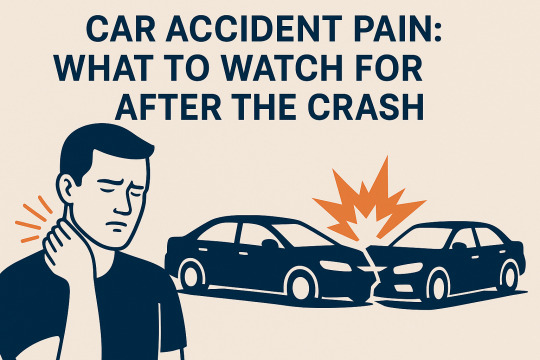
Why Some Pain Shows Up Later — and What to Do About It You may walk away from a car accident thinking, “I’m fine.” But days later, the pain sets in — your neck feels stiff, your back aches, or you have a pounding headache that won’t go away. This is more common than you might think. At Unity Pain Management, we treat many patients who develop symptoms hours or days after a crash — even when they didn’t feel injured at the time. Why Pain Is Often Delayed After an Accident In the moments after a car accident, your body releases adrenaline and shock-protecting chemicals. This response can temporarily mask pain, inflammation, or injury. Once those chemicals wear off — typically within 24 to 72 hours — your body starts to respond to the trauma, and real pain can begin. Top Symptoms to Watch for After an Accident If you’ve recently been in a car crash, keep an eye out for these common signs of injury: 🚗 1. Neck Pain or Stiffness (Whiplash) Whiplash is a soft tissue injury caused by your neck snapping back and forth. It may not hurt right away, but often shows up 1–3 days later with: - Neck stiffness or soreness - Headaches at the base of the skull - Difficulty turning your head - Dizziness or fatigue 🚗 2. Back Pain Lower or mid-back pain could signal: - Muscle strain - Herniated or bulging discs - Spinal misalignment This pain may increase with sitting, standing, or twisting. 🚗 3. Shoulder, Hip, or Joint Pain Seat belts protect you — but they can also cause blunt force trauma to joints. You may develop joint stiffness, bruising, or limited motion. 🚗 4. Headaches Post-traumatic headaches may appear due to: - Whiplash - Concussion - Neck tension - Stress Persistent or worsening headaches should always be checked out. 🚗 5. Numbness, Tingling, or Weakness This could mean nerve compression or damage, especially if pain travels down your arms or legs. 🚗 6. Abdominal Pain or Bruising This can be a red flag for internal injury. Seek emergency care immediately if you experience this. Why You Should See a Doctor – Even If You Feel “Fine” Some injuries don’t show symptoms right away. But without treatment, they can: - Get worse - Lead to chronic pain - Complicate your personal injury claim Insurance companies often deny claims if you wait too long to seek care. How Unity Pain Management Helps After a Car Accident We specialize in personal injury and post-accident care. Here’s what we offer: ✅ Same-week appointments✅ Trigger point & joint injections✅ Medication management✅ Referrals for imaging, PT, or specialists✅ Clear medical documentation for your attorney✅ We work on liens – no up-front cost if you have a lawyer You Deserve to Feel Better — and Be Protected Legally Don’t wait until the pain gets worse or the insurance company gives you trouble. Get care now, and let’s document your injuries the right way. 📞 Call Unity Pain Management at (350) 216-5774💻 Or schedule your visit at UnityPain.com Relief starts with the right evaluation. We’ve got your back — after the crash. Read the full article
0 notes
Text
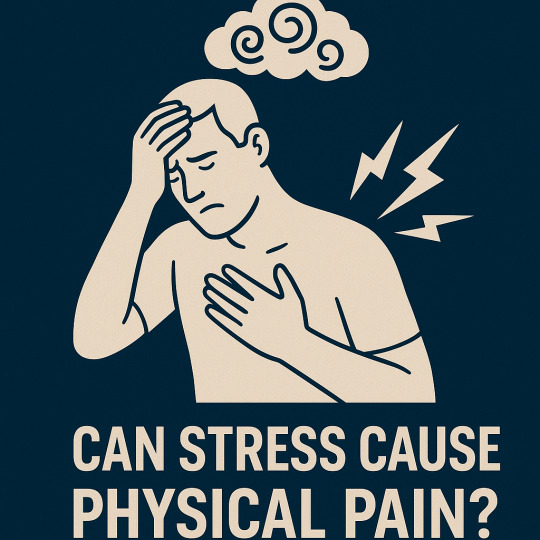
Understanding the Mind-Body Pain Connection Most of us know what stress feels like — pressure, worry, racing thoughts, and tension. But did you know that stress can actually cause real physical pain? At Unity Pain Management, we believe pain isn’t just physical — it’s also connected to your emotions, lifestyle, and mental health. And in many patients, stress is a hidden trigger that worsens or even causes pain. How Does Stress Affect the Body? When you’re under stress, your body goes into “fight or flight” mode — a natural survival response. This causes: - Muscles to tighten - Heart rate to increase - Breathing to change - Blood vessels to narrow - Stress hormones (like cortisol) to spike Over time, chronic stress can cause your muscles, nerves, and immune system to stay in a heightened state, leading to: - Muscle tension - Fatigue - Headaches - Jaw pain or teeth grinding - Neck, shoulder, or back pain - Digestive discomfort - Increased pain sensitivity Types of Pain Linked to Stress Stress can either cause new pain or make existing pain worse. Common examples include: - Tension headaches - Neck and shoulder pain - Low back pain - Fibromyalgia flare-ups - Jaw pain (TMJ) - Stomach pain or IBS symptoms - Chest tightness or body aches In some people, pain shows up after a stressful event — like a breakup, job loss, or trauma. In others, stress slowly builds up and leads to chronic pain over time. The Pain-Stress Cycle Stress causes pain.Pain causes stress.Repeat. This is known as the pain-stress cycle. When you’re stressed, your pain feels worse — and when your pain gets worse, you feel more stressed. Breaking this cycle takes more than just pills — it takes a whole-person approach. How Unity Pain Management Helps Break the Cycle At our clinic, we treat both the physical pain and its emotional triggers. Your plan may include: ✅ Trigger point or joint injections✅ Non-opioid medications for pain or anxiety✅ Relaxation and breathing techniques✅ Stretching and posture coaching✅ Referrals for mental health or physical therapy✅ Lifestyle and sleep coaching We believe that managing stress is part of managing pain — and you deserve relief on every level. When to Seek Help Call us if your pain: - Gets worse during stressful times - Doesn’t improve with rest or meds - Affects your sleep, focus, or mood - Is paired with anxiety, tension, or fatigue You don’t have to “just deal with it.” There are options. 📞 Call Unity Pain Management at (350) 216-5774 or💻 Visit UnityPain.com to schedule your consultation. Let’s treat your pain — and the stress that comes with it. Read the full article
0 notes
Video
tumblr
Medication-Assisted Treatment (MAT) uses meds, like methadone and buprenorphine, along with counseling to tackle substance use issues. It helps ease cravings and withdrawal, making recovery easier. MAT boosts recovery chances and supports overall well-being, paving the way for a healthier life. If you or someone you know needs help, don’t hesitate to reach out!
0 notes
Text

When you feel sudden pain in your neck, back, arm, or leg, it’s easy to assume it’s just a pulled muscle. But what if it’s something more serious — like a pinched nerve? At Unity Pain Management, we help patients figure out the real cause of their pain so we can treat it effectively. Pinched nerves and muscle strains may feel similar, but they’re very different issues. What Is a Muscle Strain? A muscle strain (also called a pulled muscle) happens when the muscle fibers stretch or tear. It’s usually caused by: - Lifting something too heavy - Overuse during exercise or work - Sudden movements - Poor posture or weak muscles Common signs of a muscle strain: - Local soreness or aching - Stiffness in the area - Pain that gets worse when you move - Muscle spasms or cramping - Tenderness to the touch A mild strain can heal on its own with rest, ice, compression, and stretching — usually within a few days to weeks. What Is a Pinched Nerve? A pinched nerve happens when a nerve is compressed by bones, muscles, discs, or swelling. It can happen in the neck, back, shoulder, or anywhere nerves travel through tight spaces. Common signs of a pinched nerve: - Sharp, burning, or electric pain - Numbness or tingling (“pins and needles”) - Weakness in a muscle - Pain that shoots down an arm or leg - Worsens with certain positions or movements Pinched nerves often take longer to heal and may need treatment such as injections, medications, or physical therapy. Quick Comparison FeatureMuscle StrainPinched NerveType of painDull, aching, soreSharp, shooting, electricWhere pain travelsStays in one areaMay radiate (e.g., arm or leg)Tingling/numbnessNoOften presentWeaknessUncommonCommon with nerve involvementPain with pressureYes (muscle is sore)Maybe (nerve path is sensitive)Time to healDays to weeksMay take weeks to months When to See a Pain Specialist If your pain: - Shoots or radiates down your limbs - Is numb, tingling, or weak - Has lasted longer than 2 weeks - Doesn’t improve with rest…it could be a pinched nerve, not just a muscle strain. At Unity Pain Management, we use exams, imaging, and simple diagnostic tools to identify the root cause of your pain. How We Can Help ✅ Trigger point or nerve injections✅ Non-opioid medications✅ Referral for imaging (MRI/X-ray)✅ Physical therapy recommendations✅ Education on posture and prevention Don’t Guess. Let’s Find Out Together. Muscle strain or pinched nerve — we’ll help you figure it out and start healing. 📞 Call (350) 216-5774 or💻 Schedule a visit at UnityPain.com Let’s treat the cause, not just the symptoms. Read the full article
0 notes
Video
tumblr
If you're dealing with any of these signs, it might be time to explore Medication-Assisted Treatment (MAT) at Unity Pain Management: 1. **Cravings:** Can't control your urge to use substances, even if you want to quit. 2. **Withdrawal:** Facing physical or emotional symptoms when not using that disrupt your life. 3. **Responsibilities:** Having trouble with work, family, or social obligations because of substance use. If this resonates, contact us for support and a tailored plan!
0 notes
Video
tumblr
At Unity Pain Management, we're committed to supporting your journey to recovery from opioid use. Our Medication-Assisted Treatment (MAT) combines medications with counseling and behavioral therapies to give you the best chances for success. We're here to help you find a path to a healthier, more fulfilling life. Ready to take the first step? Reach out today! 💪💚 #OpioidRecovery #MAT #UnityPainManagement
0 notes
Text
Transform your life with Medication-Assisted Treatment (MAT) at Unity Pain Management
Ready to take control of your life? 🌟 Discover the power of Medication-Assisted Treatment (MAT) at Unity Pain Management! Our compassionate team is here to support you every step of the way. Say goodbye to pain and hello to a brighter, healthier future. Don't wait—transform your life today! 💪✨ #MAT #UnityPainManagement #NewBeginnings #suboxone
0 notes
Video
tumblr
Ready to take the first step towards healing? 🌱 Our MAT program at Unity Pain Management is designed to help you regain control and find relief. Dive into a supportive environment where your well-being is our priority. Visit us at Unitypain.com to learn more and start your journey today! 💚 #UnityPainManagement #HealingJourney #suboxone #opioidaddiction
0 notes
Text

Understanding Cervicogenic Headaches Not all headaches start in the head. If you’ve ever felt a headache that seems to begin in your neck and creep upward, you might be dealing with a cervicogenic headache — a type of head pain caused by problems in the neck. At Unity Pain Management, we help patients understand where their pain is coming from — and how to stop it at the source. What Is a Cervicogenic Headache? A cervicogenic headache is a secondary headache, meaning it’s caused by another issue — in this case, a problem in the neck (cervical spine). It’s often confused with migraines or tension headaches but requires different treatment because the pain actually comes from structures in your neck, like: - Joints - Muscles - Nerves - Discs - Ligaments Common Signs Your Headache Is Neck-Related Here’s how to tell if your headache might be coming from your neck: 1. It Starts in the Neck or Back of the Head Cervicogenic headaches usually begin in the upper neck or base of the skull and may radiate to the: - Forehead - Eye area (usually one side) - Side of the head or temples 2. Pain Gets Worse with Neck Movement Turning your head, looking down, or poor posture often makes the pain worse. Some people feel sharp pain when driving, working at a desk, or looking at their phone. 3. It Only Affects One Side Most cervicogenic headaches are one-sided — affecting the same side every time. 4. You Have a History of Neck Pain or Injury If you’ve had whiplash, a car accident, arthritis, or posture issues, these can trigger neck-related headaches. 5. Pain Improves with Neck Treatment If massage, chiropractic care, trigger point injections, or posture correction help reduce the headache — it’s likely linked to your neck. Cervicogenic Headache vs. Migraine vs. Tension Headache SymptomCervicogenicMigraineTension HeadacheLocationNeck, back of headOne/both sides, frontBoth sides, foreheadCauseNeck joints/musclesBrain changesStress, muscle tensionWorsens with neck moveYesSometimesNoNausea or auraRareCommonRareResponds to neck careYesSometimesMaybe How Unity Pain Management Treats Neck-Related Headaches We create a personalized plan that may include: ✅ Trigger point or joint injections✅ Medication for inflammation or muscle tension✅ Posture and ergonomics coaching✅ Referrals to physical therapy or imaging✅ Neck strengthening and mobility guidance You Don't Have to Live With Daily Headaches If your head pain starts in your neck or keeps returning despite medications — it’s time to see a specialist. 📞 Call (350) 216-5774 or💻 Visit UnityPain.com to schedule your consultation. Let’s find the real cause of your headaches and help you feel better — from the neck up. Read the full article
0 notes
Text
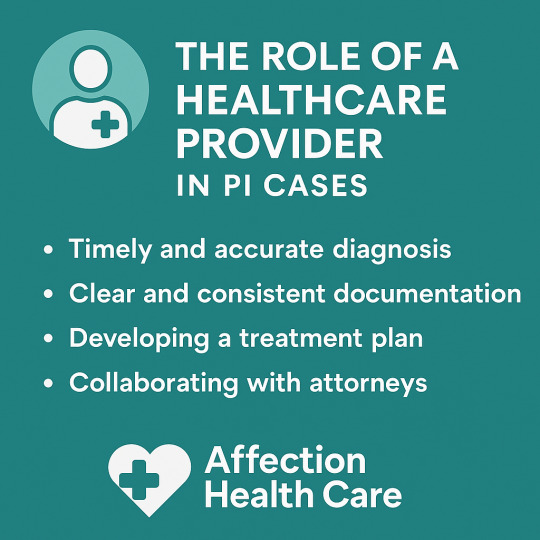
When someone is injured in a car crash, slip and fall, or any other accident caused by negligence, their first call is often to a personal injury attorney. But the second—and equally important—call should be to a trusted healthcare provider. At Affection Health Care, we understand that our role in a personal injury (PI) case goes far beyond treating pain. We are a vital part of the recovery process and the legal journey. Why Medical Providers Matter in PI Cases Healthcare providers do more than just offer care—we provide clinical credibility to injury claims. Attorneys rely on our detailed records, diagnoses, and expert observations to fight for fair compensation for their clients. Our Key Responsibilities in a PI Case 1. Timely and Accurate Diagnosis The first step after any accident is a prompt evaluation. We assess all injuries—physical and psychological—to ensure nothing is overlooked. Early documentation is critical, especially when injuries don’t show up right away (like whiplash or soft tissue damage). 2. Clear and Consistent Documentation Everything we observe—from pain levels to range of motion to imaging results—must be clearly recorded. Attorneys and insurance adjusters rely on our objective medical records to justify settlement amounts or prove the extent of injury. 3. Developing a Treatment Plan We outline a plan to help the patient recover. This may include: - Medication management - Trigger point injections - Physical therapy referrals - Imaging studies (X-ray, MRI, etc.) - Behavioral health referrals when needed The goal: help the patient get better while showing a structured, medically necessary plan. 4. Progress Monitoring PI cases often take time. We continue to evaluate, adjust care, and document every visit. Gaps or inconsistencies in care can be used to dispute a claim, so we help patients stay on track with follow-ups. 5. Collaborating With Attorneys We share records and treatment updates directly with attorneys. In some cases, we provide narrative reports or expert statements to support the legal process. 6. Lien-Based Treatment For patients without insurance, we provide care on a lien, meaning they receive treatment now and we are reimbursed once the case settles. This removes the financial barrier to necessary care. How We Support Both the Patient and the Attorney At Affection Health Care, we are the bridge between healing and justice. We make it easier for attorneys to: - Prove the injury is real and connected to the accident - Demonstrate the cost of medical care - Show the impact on the patient’s daily life And we help patients by: - Reducing pain and promoting recovery - Simplifying their medical journey during a stressful time - Providing care with compassion and without upfront costs Trust and Integrity Matter Not all medical providers are created equal in the world of PI. Attorneys trust us because we are: - Consistent in our documentation - Ethical in our care - Reliable with communication - Focused on both outcomes and advocacy If You’re a PI Attorney or Patient—We’re Here to Help We work with law firms, injured individuals, and case managers across California to provide fast, professional, and ethical care after an injury. 📍Visit us at AffectionHealth.com📞 Call (350) 216-5774 to schedule an appointment or make a referral. Affection Health CareYour trusted partner in recovery, documentation, and legal support. Read the full article
0 notes
Text
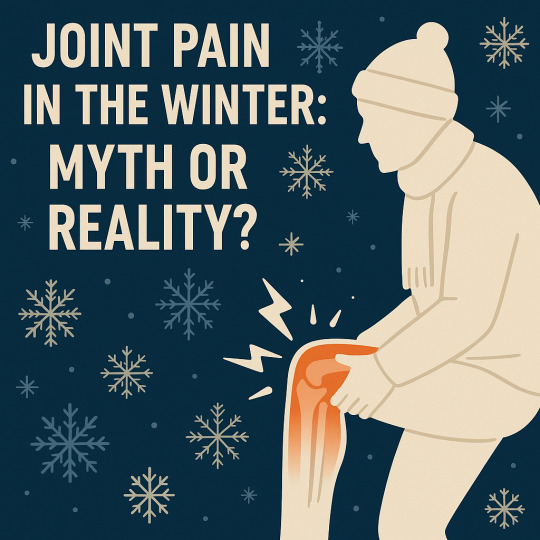
When the temperatures drop, many people say their joints start to ache — especially those with arthritis or past injuries. But is this just an old wives’ tale, or is there real science behind the winter pain? At Unity Pain Management, we see this concern every year. And the short answer is: yes, winter joint pain is real — for many people. Let’s break it down. Why Do Joints Hurt More in the Cold? There are several reasons why joint pain can feel worse during colder months: 1. Drop in Barometric Pressure As the weather changes, barometric pressure (the weight of the air around us) drops. This can cause: - Tissues in your body to expand slightly - More pressure in your joints, especially if you have inflammation - A sensation of stiffness, tightness, or soreness This effect is especially common in people with osteoarthritis, rheumatoid arthritis, or old joint injuries. 2. Cold Makes Muscles Tighter In cold temperatures, your muscles contract and tighten — often without you realizing it. This increases joint stiffness and sensitivity, making movement more painful or difficult. 3. Less Activity When it's cold or rainy, we tend to move less, exercise less, and stay indoors. Less movement means less joint lubrication and more stiffness. Even just a few days of inactivity can lead to noticeable joint discomfort, especially in the knees, hips, and hands. So… Is It a Myth? Not really. While science doesn’t have a perfect explanation yet, many patients truly feel more joint pain in colder weather — and it's a recognized trend in pain clinics around the world. Some studies show a link between weather changes and joint pain, while others don’t. But even if science hasn’t proven it 100%, your experience is real — and treatable. Tips to Manage Winter Joint Pain You don’t have to suffer through every cold front. Try these simple tips to stay more comfortable: ✅ Stay Active Move daily — even indoors. Gentle stretching, walking, or using resistance bands helps keep joints lubricated. ✅ Warm Up the Joints Use heating pads, warm showers, or dress in layers to prevent your joints from tightening up. ✅ Eat Anti-Inflammatory Foods Omega-3-rich foods like salmon, leafy greens, and turmeric may reduce swelling and stiffness. ✅ Stay Hydrated Even in winter, dehydration can make your joints feel worse. ✅ Get Treated If your pain doesn’t improve with basic care, injections, medication, or referrals for therapy may help. When to Seek Help If your joint pain: - Gets worse in the cold - Doesn’t respond to rest or home care - Affects your sleep, walking, or daily life …it’s time to talk to a pain specialist. Unity Pain Management Can Help We offer personalized joint pain care, including: - Trigger point or joint injections - Medication management - Telehealth for flare-ups - Referrals for therapy, imaging, or orthopedics 📞 Call (350) 216-5774 or💻 Visit UnityPain.com to schedule a visit today. Don’t wait for spring — relief can start right now. Read the full article
0 notes
Text

If you’ve ever felt a sharp, shooting pain that runs down your leg — or a constant ache in your lower back, buttock, or thigh — you may be dealing with sciatica. It’s one of the most common causes of nerve-related pain, but it’s also one of the most misunderstood. At Unity Pain Management, we help patients identify and treat sciatica so they can get back to life without that nagging, radiating pain. What Is Sciatica? Sciatica isn’t a condition — it’s a symptom. It happens when something puts pressure on your sciatic nerve, the longest nerve in your body. This nerve runs from your lower back, through your hips and buttocks, and down each leg. Sciatica usually affects one side of the body. What Does Sciatica Feel Like? Sciatica can cause a wide range of symptoms, depending on how the nerve is being compressed. Patients often describe it as: - 🔥 A sharp, shooting pain down the leg - ⚡ A burning or electric sensation in the buttock or thigh - 🪑 Pain that worsens when sitting or standing - 😖 Tingling, numbness, or “pins and needles” - 🦵 Muscle weakness in the leg or foot - 🚶♂️ Pain that makes walking or bending difficult Pain may start in the lower back or buttocks and travel down the back of the thigh or calf. Some people feel it as a dull ache, while others feel intense, stabbing pain — especially after standing or sneezing. What Causes Sciatica? Sciatica occurs when something pinches or irritates the sciatic nerve, most often from: - Herniated or bulging discs - Spinal stenosis (narrowing of the spine) - Degenerative disc disease - Piriformis syndrome (a muscle pressing on the nerve) - Injury or trauma - Sitting too long or poor posture How Is Sciatica Diagnosed? At Unity Pain Management, we begin with: - A full physical exam - Questions about your pain pattern - Neurological tests (reflexes, strength, sensation) - Imaging if needed (like MRI or X-ray) The goal is to identify the exact source of the nerve pressure, so we can treat it at the root. Treatment Options for Sciatica Most cases of sciatica improve without surgery. At Unity Pain Management, we customize a plan that may include: ✅ Trigger Point or Nerve Injections To reduce inflammation and calm irritated nerves. ✅ Medication Management Non-opioid meds to manage nerve pain and inflammation. ✅ Stretching and Physical Therapy Referrals To improve posture, flexibility, and muscle balance. ✅ Posture & Ergonomic Coaching Especially for people who sit or drive for long periods. ✅ Lifestyle Tips for Prevention Staying active, core strengthening, and weight management. When Should You Get Help? You should see a specialist right away if: - Pain lasts more than 1–2 weeks - You feel weakness or numbness in the leg - You lose bladder or bowel control (go to the ER immediately) - It’s getting worse, not better Sciatica Can Be Treated — You Don’t Have to Suffer You don’t have to live with pain shooting down your leg or sitting out of life’s moments. 📍 Unity Pain Management in Modesto is here to help.📞 Call (350) 216-5774 or💻 Visit UnityPain.com to schedule your appointment. Get the relief you deserve — and get back to living. Read the full article
0 notes
Text
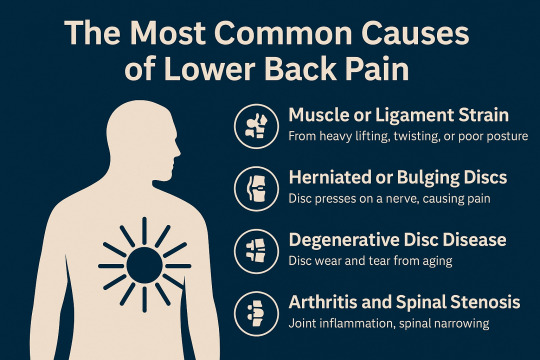
And What You Can Do About It Lower back pain is one of the most common reasons people visit a doctor or miss work. It can be mild or severe, short-term or long-lasting — and it often interferes with daily life, sleep, and mobility. At Unity Pain Management, we help patients get to the root of their back pain and create a plan for long-term relief. Why Lower Back Pain Happens Your lower back, also called the lumbar spine, supports most of your body weight and is involved in nearly every movement — walking, lifting, twisting, and even sitting. Because it works so hard, it’s easy for this area to become injured, strained, or inflamed. Here are the most common causes we see: 1. Muscle or Ligament Strain One of the top causes of sudden back pain is a pulled muscle or overworked ligament. This can happen from: - Lifting something too heavy - Twisting the wrong way - A fall or awkward movement - Poor posture over time Good news: These usually heal with rest, ice, and simple treatment — but if ignored, they can return or lead to chronic pain. 2. Herniated or Bulging Discs Your spine has discs (like soft cushions) between each vertebra. These can bulge or break open, pressing on nearby nerves — especially the sciatic nerve. Symptoms may include: - Shooting pain down one leg - Tingling or numbness - Worsening with coughing or sitting This condition is often called a herniated disc or slipped disc. 3. Degenerative Disc Disease As we age, spinal discs lose flexibility and moisture, causing them to shrink or wear out. This is called degenerative disc disease. It may lead to: - Chronic lower back pain - Pain that flares up after activity - Occasional numbness or weakness 4. Arthritis and Spinal Stenosis Arthritis can affect the spine too — leading to swelling, stiffness, and joint damage. Spinal stenosis occurs when the space around the spinal cord narrows, putting pressure on the nerves. Both conditions often cause: - Pain when walking or standing - Relief when sitting or bending forward - Stiffness in the lower back 5. Poor Posture & Sedentary Lifestyle Sitting too long — especially with bad posture — weakens your core and back muscles, making your spine more prone to pain. Common issues: - Office work without ergonomic setup - Driving for long periods - Lack of regular movement or stretching Over time, this can lead to muscle imbalance, stiffness, and strain. 6. Accidents, Falls, or Trauma Even minor car accidents or slips can cause micro-tears, inflammation, or nerve damage that leads to long-lasting back pain — especially if left untreated. When to See a Pain Specialist You should get checked out if: - Your pain lasts more than 2 weeks - You feel numbness, tingling, or weakness - It interferes with sleep, walking, or working - Pain shoots into your leg or foot - You’ve had an accident or injury recently How Unity Pain Management Can Help We offer personalized back pain care including: - Injections to reduce inflammation - Medication management (non-opioid when possible) - Referrals for imaging or therapy - Spinal exams to identify the real cause - Education and prevention strategies Ready to Feel Better? 📍Located in Modesto, CA – we proudly serve patients from surrounding areas.📞 Call (350) 216-5774 or💻 Schedule your visit at UnityPain.com Let’s get to the root of your back pain — and build a plan for real relief. Read the full article
0 notes
Text

While medication and injections can be essential parts of pain management, many people are also searching for natural ways to relieve pain—especially for chronic conditions like back pain, arthritis, and muscle tension. At Affection Health Care, we support a well-rounded approach to healing that may include holistic, drug-free options alongside your treatment plan. Here are 10 of the most effective natural remedies for pain relief that you can explore today. 🌿 1. Heat Therapy A heating pad, hot towel, or warm bath can help: - Relax tight muscles - Improve blood flow - Ease stiffness Ideal for: Back pain, joint pain, muscle spasms ❄️ 2. Cold Therapy Applying ice packs reduces inflammation and numbs sharp pain. Best used in the first 48 hours after injury or flare-up. Ideal for: Sprains, swelling, new injuries 🧘 3. Gentle Stretching and Yoga Slow stretching improves flexibility and releases tension. Yoga also promotes mindfulness, which can help reduce pain perception. Ideal for: Neck pain, fibromyalgia, stress-related pain 💆 4. Massage Therapy A skilled massage therapist can: - Loosen tight tissue - Improve circulation - Relieve nerve compression Ask your provider for trusted referrals. 🍵 5. Anti-Inflammatory Herbs and Teas Natural ingredients like turmeric, ginger, green tea, and willow bark have anti-inflammatory effects that may reduce joint and muscle pain. Speak with your provider before combining with medications. 🐟 6. Omega-3 Fatty Acids Found in fatty fish, flaxseeds, and supplements, Omega-3s help reduce inflammation throughout the body. Ideal for: Arthritis, autoimmune pain, heart health 🧘♂️ 7. Deep Breathing & Meditation Calming your nervous system through breathing or guided meditation can reduce: - Pain intensity - Muscle tension - Emotional distress Ideal for: Chronic pain, tension headaches, PTSD-related pain 🥦 8. Nutrient-Dense Diet Eating more fruits, vegetables, whole grains, and lean proteins helps your body heal faster and reduces inflammation. Avoiding processed foods and excess sugar can also reduce pain flare-ups. 🛌 9. Better Sleep Hygiene Lack of quality sleep can worsen pain. Improve your rest by: - Setting a sleep schedule - Limiting screen time before bed - Creating a calming nighttime routine Ideal for: Back pain, nerve pain, overall recovery 🚶 10. Gentle Movement and Walking Staying still too long can cause stiffness. Light, regular movement: - Reduces inflammation - Increases mobility - Improves mood Ideal for: Joint stiffness, back pain, sedentary-related discomfort 🏥 Final Tip: Work With Your Provider Natural remedies work best when combined with professional medical guidance. At Affection Health Care, we can help you find the right blend of clinical and natural solutions for safe, effective pain relief. 📅 Interested in a pain relief consultation? Visit AffectionHealth.com📞 Call: (350) 216-5774 Affection Health CareWe combine the best of science and nature—so you can live pain-free. Read the full article
0 notes
Text

What’s the Difference and Why It Matters Pain is your body’s way of telling you something is wrong. But not all pain is the same — and knowing the difference between acute and chronic pain can help you get the right treatment and relief faster. At Unity Pain Management, we help patients understand what kind of pain they’re experiencing and how to treat it effectively. What Is Acute Pain? Acute pain is sudden and sharp. It usually comes from an obvious cause — like an injury, surgery, or infection — and it doesn’t last very long. Examples of acute pain include: - A sprained ankle - Pain after surgery - A broken bone - Dental pain - Muscle strain In most cases, acute pain goes away within a few days to weeks, especially as the body heals. It's your body’s natural alarm system saying, "Hey, take care of this!" What Is Chronic Pain? Chronic pain lasts longer than 3 months and may not go away, even after the original problem is healed. It can start with an injury or illness, or it might appear without a clear cause. Examples of chronic pain include: - Back or neck pain that won’t go away - Arthritis - Nerve damage (neuropathy) - Fibromyalgia - Migraines - Old injury pain that keeps flaring up Chronic pain can affect more than just your body — it may lead to fatigue, depression, anxiety, and sleep problems. Why Knowing the Difference Matters Treatment is different depending on whether the pain is acute or chronic: TypeFocus of TreatmentAcuteQuick relief, healing, short-term medication or restChronicLong-term pain management, lifestyle changes, specialized care, ongoing support If acute pain is ignored or poorly treated, it can sometimes turn into chronic pain. That’s why it’s important to take all pain seriously — even if it seems temporary. When to See a Pain Specialist If you’ve had pain that: - Lasts longer than 12 weeks - Is getting worse, not better - Interferes with sleep, work, or daily life ... then it’s time to consult a pain management provider. At Unity Pain Management, we take a full-body approach to understanding and treating both acute and chronic pain. Whether you’ve just been injured or you’ve been hurting for years, we’re here to help. 📞 Call us at (350) 216-5774 or💻 Visit UnityPain.com to schedule your visit. You don’t have to live in pain. Relief starts here. Read the full article
0 notes